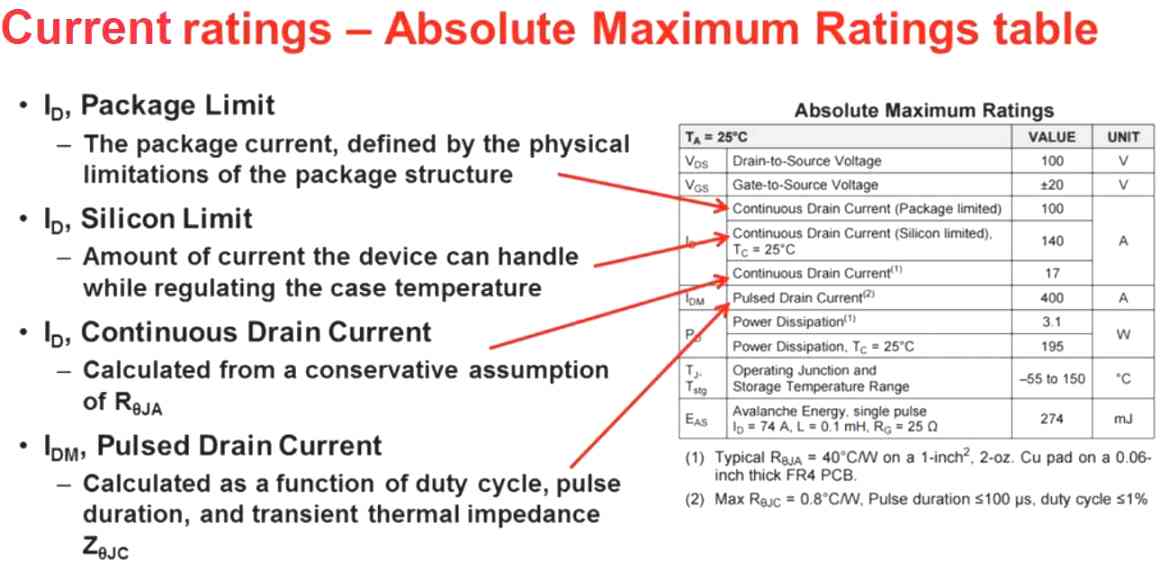hioyo
Advanced Member level 4

Why is pulsed drain current higher than continuous drain current in MOSFETs?
In MOSFET data-sheets, pulsed drain current is much higher than (by 4x) continuous drain current.
What is the reason behind thi
In MOSFET data-sheets, pulsed drain current is much higher than (by 4x) continuous drain current.
What is the reason behind thi



